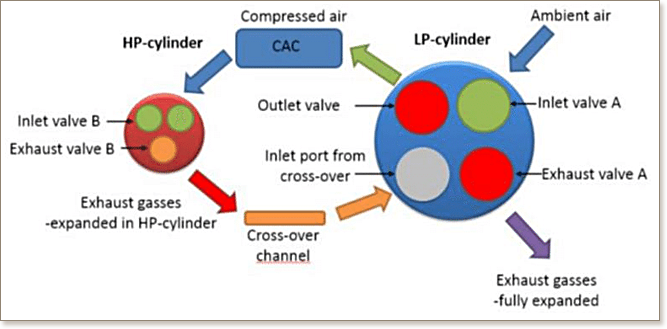Optimum Heat Release Rates for a Double Compression Expansion (DCEE) Engine
V. Shankar, N. Lam, A. Andersson, B. Johansson
SAE Technical Paper (2017)

Exhaust gas recirculation (EGR), Combustion and combustion processes.The concept of double compression, and double expansion engine (DCEE) for improving the efficiency of piston reciprocating engines was introduced in SAE Paper 2015-01-1260. This engine configuration has separate high, and low pressure units thereby effectively reducing friction losses for high effective compression ratios. The presence of an additional expander stage also theoretically allows an extra degree of freedom to manipulate the combustion heat release rate so as to achieve better optimum between heat transfer, and friction losses. This paper presents a 1-D modeling study of the engine concept in GT-Power for assessing the sensitivity of engine losses to heat release rate. The simulations were constrained by limiting the maximum pressure to 300 bar. The maximum motoring pressure was varied by, (a) constraining the compression ratio of the high pressure unit, and adapting the low pressure unit accordingly, (b) changing the compression ratio of the high pressure unit with a constant geometry for the low pressure unit. The effect of maximum pressure on the brake thermal efficiency was also investigated. A final set of simulations also compared the heat release rate of the model in SAE Paper 2015-01-1260 and two other models with the same start and end of combustion. The simulations were done at engine speed of 1900 rpm, and lambda 3. The results indicate the relative insensitivity of this concept engine’s performance to the heat release rate when the maximum pressure constrained to a constant value of 300 bar, or even when lowering peak pressure down to 200 bar due to reduction in heat loss, and friction losses. The major limitations of the present study was the adoption of a constant convection heat loss multiplier for all the cases, and a simplistic friction model.